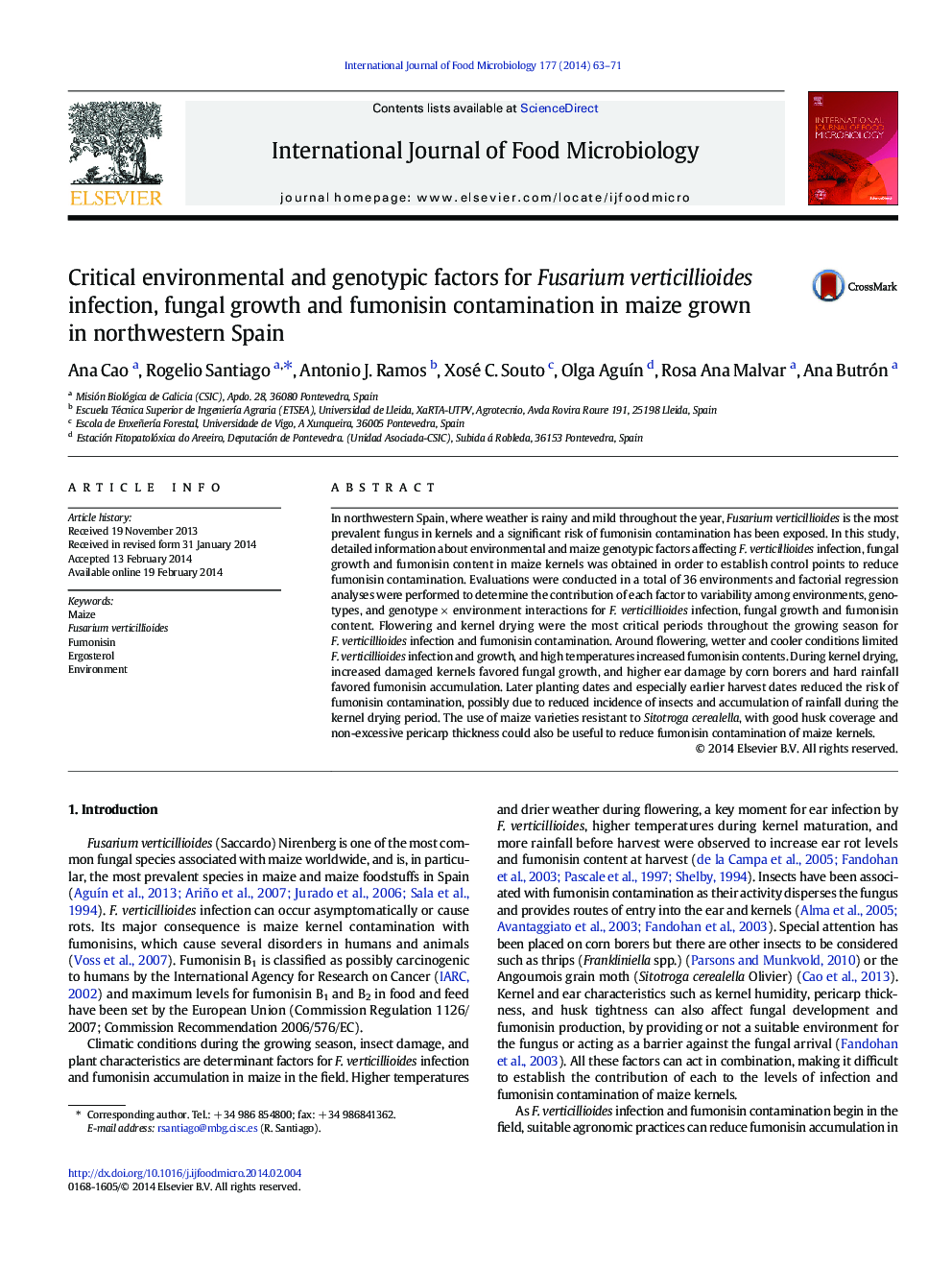| کد مقاله | کد نشریه | سال انتشار | مقاله انگلیسی | نسخه تمام متن |
|---|---|---|---|---|
| 4366972 | 1616605 | 2014 | 9 صفحه PDF | دانلود رایگان |

• Factorial regression models detail critical factors for infection, ergosterol and fumonisin contamination.
• F. verticillioides infection but not ergosterol was highly related to fumonisin content.
• Environmental factors were a determinant for infection and fumonisin contamination.
• Flowering and kernel drying were the most critical periods for fumonisin contamination.
• Later plantings and earlier harvests reduced infection and fumonisin contamination.
In northwestern Spain, where weather is rainy and mild throughout the year, Fusarium verticillioides is the most prevalent fungus in kernels and a significant risk of fumonisin contamination has been exposed. In this study, detailed information about environmental and maize genotypic factors affecting F. verticillioides infection, fungal growth and fumonisin content in maize kernels was obtained in order to establish control points to reduce fumonisin contamination. Evaluations were conducted in a total of 36 environments and factorial regression analyses were performed to determine the contribution of each factor to variability among environments, genotypes, and genotype × environment interactions for F. verticillioides infection, fungal growth and fumonisin content. Flowering and kernel drying were the most critical periods throughout the growing season for F. verticillioides infection and fumonisin contamination. Around flowering, wetter and cooler conditions limited F. verticillioides infection and growth, and high temperatures increased fumonisin contents. During kernel drying, increased damaged kernels favored fungal growth, and higher ear damage by corn borers and hard rainfall favored fumonisin accumulation. Later planting dates and especially earlier harvest dates reduced the risk of fumonisin contamination, possibly due to reduced incidence of insects and accumulation of rainfall during the kernel drying period. The use of maize varieties resistant to Sitotroga cerealella, with good husk coverage and non-excessive pericarp thickness could also be useful to reduce fumonisin contamination of maize kernels.
Journal: International Journal of Food Microbiology - Volume 177, 2 May 2014, Pages 63–71